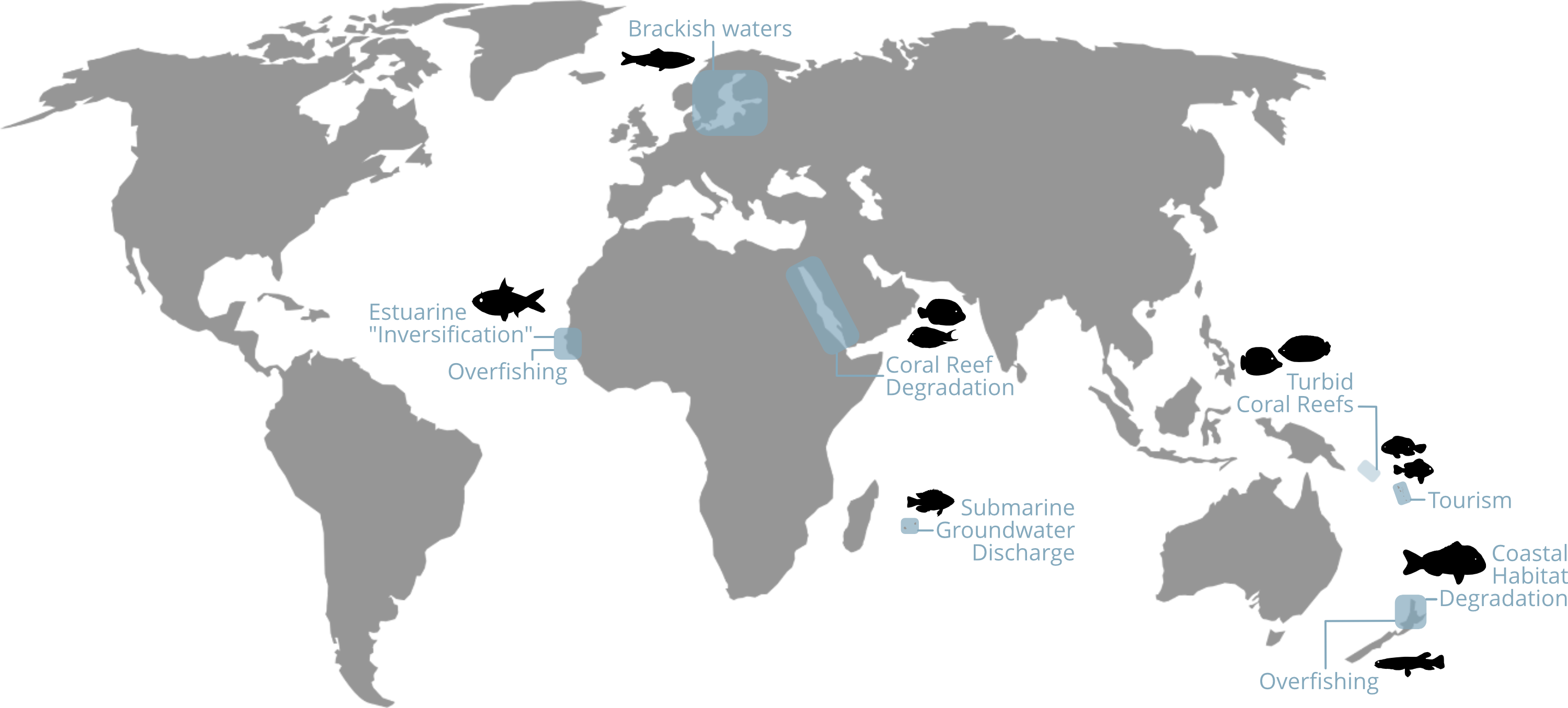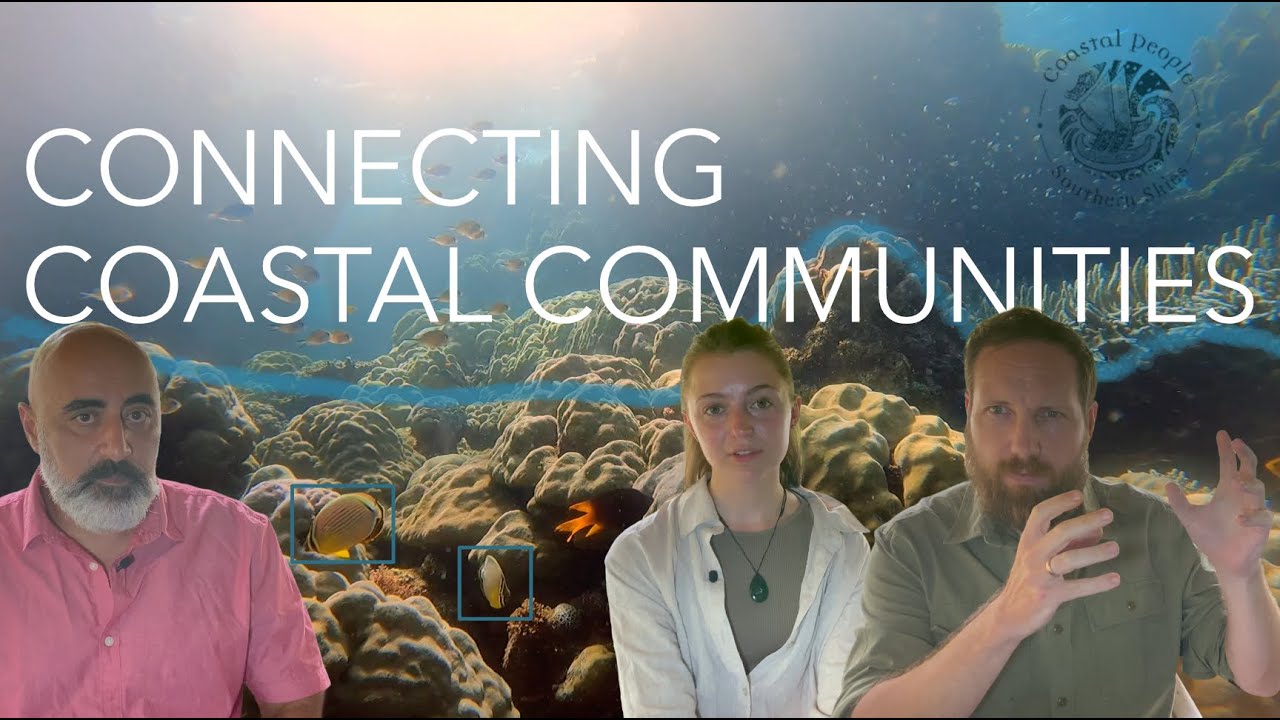Projects

Publications
Peer Reviewed Articles
[25] James, T., Steele, E.°, Zhang, J., Lilkendey, J., Lequesne, B.°, Trip, E. D. L., & Sabetian, A. (2025). Age-based growth dynamics analysis of recreationally- vs commercially-caught snapper (Chrysophrys auratus) in SNA1 management zone. New Zealand Journal of Marine and Freshwater Research, 1–7. https://doi.org/10.1080/00288330.2025.2503159 [open access]
[24] Campbell, M., Walter, R., Furey, L., Ash, E., McAlister, A., Tromp, M., Reid, M., Zhang, J., Simone, M., Lilkendey, J., White, L., & Sabetian, A. (2025). Reconstructing pre-European marine habitats using archaeological assemblages: A case study from the Ōtata midden, New Zealand. Journal of Archaeological Science: Reports. https://doi.org/10.1016/j.jasrep.2025.105160 [open access]
[23] Moor, A., Jones, M., Wilson, I., Zhang, J., Lilkendey, J., D.L Trip, E., Sabetian, A. (2025). Age-based population dynamics of the four-rayed rattail Coryphaenoides subserrulatus from the Chatham Rise, New Zealand. New Zealand Journal of Marine and Freshwater Research. https://doi.org/10.1080/00288330.2025.2488385 [open access]
[22] Sabetian, A., Huong Hoang, L.°, Zhang, J., White, W. Lindsey., Chen, T., Wang, H., Lilkendey, J. (2025) Fatty acid biomarkers reveal maternal energy allocation strategies in spawning Snapper (Chrysophrys auratus). New Zealand Journal of Marine and Freshwater Research. https://doi.org/10.1080/00288330.2025.2464048 [open access]
[21] Lilkendey, J*, Hegg, J., Campbell, M., Zhang, J., Raby, H.°, Reid, M., Tromp, M., Ash, E., Furey, L., White, L., Walter, R., Sabetian, A. (2025) Overcoming Shifting Baselines: Paleo-Behaviour Reveals Industrial Revolution as Tipping Point. Global Change Biology. https://doi.org/10.1111/GCB.70038 [open access; data available at https://doi.pangaea.de/10.1594/PANGAEA.971588, code available at https://github.com/Jens-Hegg/NZSnapperOtoDTW/ and https://doi.org/10.5281/zenodo.14567429]
[20] Sabetian, A., Huong Hoang, L.°, Zhang, J., Lilkendey, J. (2024) Tracing transgenerational plasticity through ova fatty acid biomarkers in Giant Kōkopu (Galaxias argenteus). New Zealand Journal of Marine and Freshwater Research. https://doi.org/10.1080/00288330.2024.2324815 [open access]
[19] Lilkendey, J.*, Zhang, J., Barrelet, C., Meares, M.°, Larbi, H.°, Subsol, G., Chaumont, M., Sabetian, A. (2024) Herbivorous fish feeding dynamics and energy expenditure on a coral reef: Insights from stereo-video and AI-driven 3D tracking. Ecology & Evolution. https://doi.org/10.1002/ece3.11070 [open access; data available at https://doi.pangaea.de/10.1594/PANGAEA.957634, code available at https://github.com/CBarrelet/Bubot and https://doi.org/10.5281/zenodo.10657695]
[18] Lilkendey, J.* (2023) Conserve the open media ecosystem! Legal and ethical considerations when using online repositories for AI training in ecology. Ecology Letters, 26, 2023-228. https://doi.org/10.1111/ele.14311 [open access]
[17] Sabetian, A.†, Zhang, J., Campbell, M., Walter, R., Allen, H., Reid, M., Wijenayake, K., Lilkendey, J.† (2021) Fish nearshore habitat-use patterns as ecological indicators of nursery quality. Ecological Indicators, 131. https://doi.org/10.1016/j.ecolind.2021.108225 [open access; code and data available at http://doi.org/10.5281/zenodo.5518872 and https://doi.pangaea.de/10.1594/PANGAEA.937786]
[16] Campbell, M., Lilkendey, J., Reid, M., Walter, R., Wijenayake, K., Zhang, J., Sabetian, A. (2021) Tracing changing life histories of tāmure (Chrysophrys auratus) in the Hauraki Gulf, New Zealand, through otolith chemistry. Archaeological and Anthropological Sciences. https://doi.org/10.1007/s12520-021-01362-9 [part of the topical collection Fishing Over the Millennia]
[15] Trnski, L.°, Sabetian, A., Lilkendey, J.* (2020) Scaring Nemo: Contrasting effects of observer presence on two anemonefish species. Journal of Fish Biology. https://doi.org/10.1111/jfb.14492 [open access; data available https://doi.org/10.1594/PANGAEA.914226]
[14] Huong Hoang, L.°, Lilkendey, J., Sabetian, A. (2020) The effects of generation on ova fatty acid profile in brood Giant Kokopu Galaxias argenteus. New Zealand Journal of Marine and Freshwater Research. https://doi.org/10.1080/00288330.2020.1760323
[13] Sabetian, A., Cullen, D., Huong Hoang, L.°, Lilkendey, J. (2020) Diversified bet-hedging explains the batch effect in New Zealand snapper Chrysophrys auratus. Aquaculture, 522. https://doi.org/10.1016/j.aquaculture.2020.735135 [data available at https://doi.org/10.1594/PANGAEA.910018]
[12] Pisternick, T.°, Lilkendey, J.*, Audit-Manna, A., Dumur Neelayya, D., Neehaul, Y., Moosdorf, N. (2020) Submarine groundwater springs are characterized by distinct fish communities. Marine Ecology. https://doi.org/10.1111/maec.12610 [open access; data available at https://doi.org/10.1594/PANGAEA.921340]
[11] Lilkendey, J.*, Pisternick, T.°, Neumann, S. I.°, Dumur Neelayya, D., Bröhl, S., Neehaul, Y., Moosdorf, N. (2019) Fresh submarine groundwater discharge augments growth in a reef fish. Frontiers in Marine Science, 6, 613. https://doi.org/10.3389/fmars.2019.00613 [open access; data available at https://doi.org/10.1594/PANGAEA.897645]
As Döring
[10] Baldé, B. S., Döring, J., Ekau, W., Brehmer, P. (2019) Bonga shad (Ethmalosa fimbriata) spawning tactics in an upwelling environment. Fisheries Oceanography. 28, 686-697. https://doi.org/10.1111/fog.12451 [open access; data available at https://doi.pangaea.de/10.1594/PANGAEA.880051]
[9] Döring, J.*, Wagner, C., Tiedemann, M., Brehmer, P., Ekau, W. (2019) Spawning energetics and otolith microchemistry provide insights into the stock structure of Ethmalosa fimbriata. Journal of Fish Biology, 94, 241-250. https://doi.org/10.1111/jfb.13881 [open access; data available at https://doi.pangaea.de/10.1594/PANGAEA.897882]
[8] Tiedemann, M., Fock, H. O., Döring, J., Badji, L. B., Möllmann, C. (2018) Water masses and oceanic eddy regulation of larval fish assemblages along the Cape Verde Frontal Zone. Journal of Marine Systems. 183, 42-55. https://doi.org/10.1016/j.jmarsys.2018.03.004
[7] Döring, J.*, Hauss, H., Haslob, H. (2018) Spatial and seasonal variability in reproductive investment of Baltic sprat. Fisheries Research, 204, 49-60. https://doi.org/10.1016/j.fishres.2018.02.002 [data available at https://doi.pangaea.de/10.1594/PANGAEA.897886]
[6] Döring, J.*, Neumann, S. I.°, Sloterdijk, H., Ekau, W. (2017) Seasonal growth differences of larval Hyporhamphus picarti (Hemiramphidae) in the Sine Saloum estuary, Senegal. Journal of Applied Ichthyology, 34, 97-102. https://doi.org/10.1111/jai.13528 [open access; data available at https://doi.pangaea.de/10.1594/PANGAEA.885775]
[5] Döring, J.*, Ekau, W. (2017) Using oocyte essential fatty acid composition to assess spawner reproductive potential under hypersaline conditions. Marine Ecology Progress Series, 584, 199-212. https://doi.org/10.3354/meps12366 [open access; data available at https://doi.pangaea.de/10.1594/PANGAEA.880130]
[4] Döring, J.*, Tiedemann, M., Stäbler, M., Sloterdijk, H., Ekau, W. (2017) Ethmalosa fimbriata (Bowdich 1825), a clupeid fish that exhibits elevated batch fecundity in hypersaline waters. Fishes, 2(3), 13. https://doi.org/10.3390/fishes2030013 [open access; data available at https://doi.pangaea.de/10.1594/PANGAEA.880049]
[3] Sloterdijk, H., Sadio, O., Brehmer, P., Müller, H., Döring, J., Ekau, W. (2017) Composition and structure of the larval fish community related to environmental parameters in a tropical estuary impacted by climate change. Estuarine, Coastal and Shelf Science, 197, 10–26. https://doi.org/10.1016/j.ecss.2017.08.003
[2] Tiedemann, M., Fock, H. O., Brehmer, P., Döring, J., Möllmann, C. (2017) Does upwelling intensity determine larval fish habitats in upwelling ecosystems? The case of Senegal and Mauritania. Fisheries Oceanography, 26(6), 655–667. https://doi.org/10.1111/fog.12224
[1] Ndoye, S., Capet, X., Estrade, P., Sow, B., Machu, E., Brochier, T., Döring, J., Brehmer, P. (2017) Dynamics of a “low-enrichment high-retention” upwelling center over the southern Senegal shelf. Geophysical Research Letters, 44(10), 5034-5043. https://doi.org/10.1002/2017GL072789 [open access]
*Corresponding author, †shared first authorship, °student I supervised
Talks
UN Ocean Decade ReefExplorer 2025: KI trifft Riff: Neue Einblicke in die Ökologie von Korallenrifffischen
Fish AI Consortium Seminars 2024: Mapping Energy Seascapes with AI-Powered 3D Multi-Object Tracking
Indo-Pacific Fish Conference 2023: Assessing ecosystem functioning through 3D AI‐enhanced fish tracking: A Red Sea case study
Theses
Döring, J. (2018) Unravelling the reproductive tactics of a tropical clupeid fish (Ethmalosa fimbriata, Bowdich 1825) against the backdrop of climate change. Dissertation, Leibniz Zentrum für Marine Tropenforschung (ZMT), Universität Bremen. 171 p.
Döring, J. (2012) Fecundity aspects in Baltic sprat - spatial variations in reproductive investment. Diplomarbeit, GEOMAR Helmholtz-Zentrum für Ozeanforschung, Christian-Albrechts-Universität zu Kiel. 67 p.
Media Coverage
NZ Herald Science shows when things turned bad for the Hauraki Gulf’s snapper (26.01.2025)
Interview in divemaster – Das Fachmagazin für die Hydrosphäre “KI im Riff” (01/2025)
German Press Agency (dpa) Meldung “Mit Künstlicher Intelligenz Tiere besser schützen” (04.10.2024) (published in 150+ national and international News outlets) e.g.:
Zeit Online
Welt.de
Der Standard
earth.com AI illuminates fish interactions in coral reefs (31.08.2024)
eco Magazine AI Allows for High-Resolution 3D Tracking of Coral Reef Fish (30.08.2024)
Featuring my advocacy for improved working conditions in German academia (#IchBinHanna):
Tagesschau at 20:00
Buten und Binnen
NZ Herald Ancient insights: how the Gulf's snapper lost crucial nurseries (17.10.2021)
Deutschlandfunk Nova Scaring Nemo – Visits frighten some clown fish (14.09.2020)
Memberships
Fish AI Consortium
Coastal People – Southern Skies (CPSS)
CEMarin
Fisheries Society of the British Isles (FSBI)







